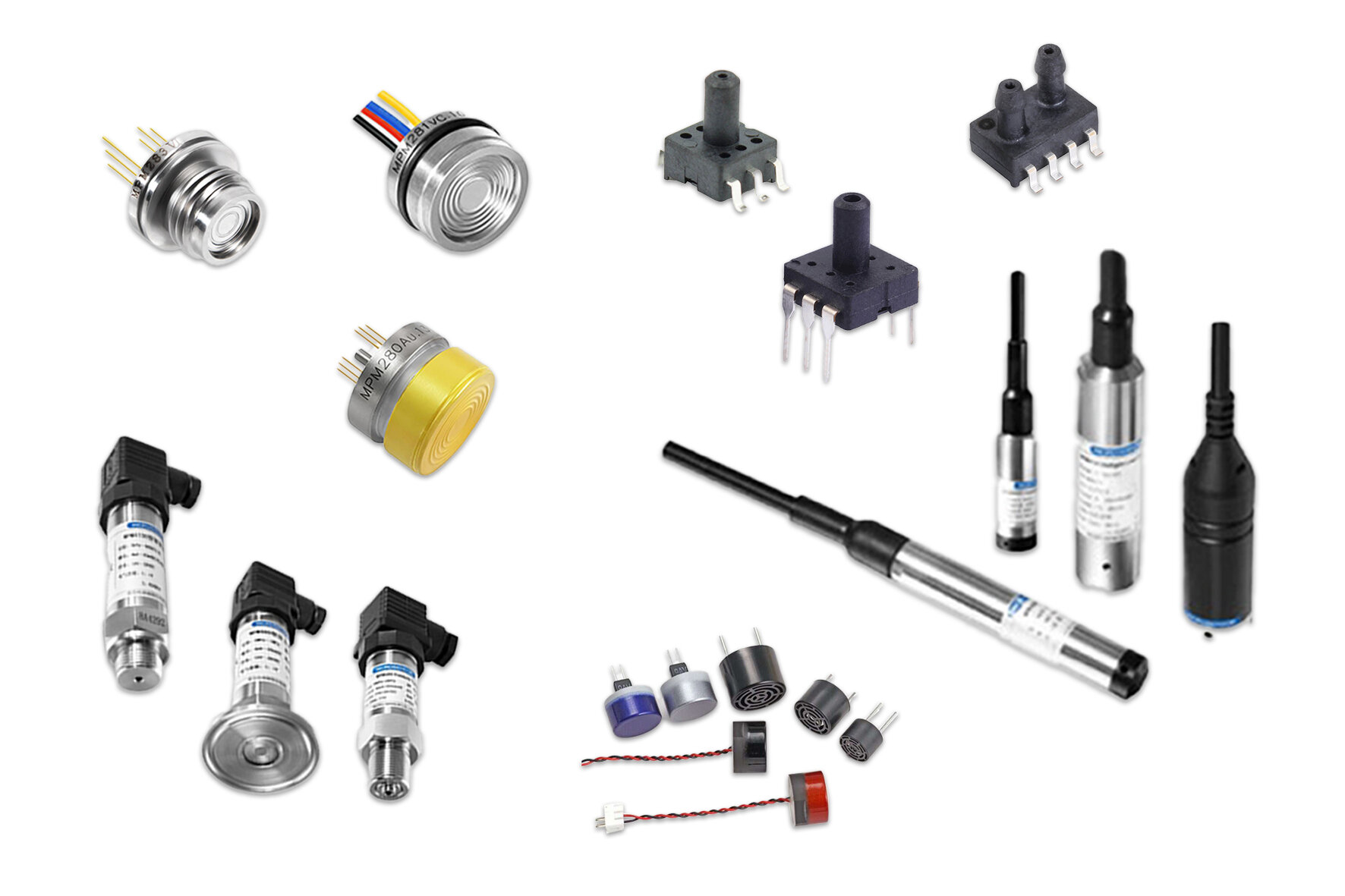
Pressure, Level and Ultrasonic Sensors
Pressure and level sensors are used to measure pressure in liquids or gases resp. filling levels. These sensors convert the physical quantity of pressure into an electrical signal. Piezoresistive pressure sensors are one of the most commonly used types of pressure sensors. The reason for this is their relatively simple design and the good linearity between the applied force (pressure) and the generated output signal. The basic structure of a piezoresistive pressure sensor consists of a thin, elastic membrane to which, among other things, four resistors are applied in a Wheatstone bridge circuit. Conceptually, the design of this sensor is similar to the principle of an electrical load cell.
Ultrasonic sensors cyclically emit a short, high-frequency sound pulse. This travels through the air at the speed of sound. If it hits an object, it is reflected there and returns to the ultrasonic sensor as an echo. By measuring the time it takes for the sound pulse to travel from the sensor to the object and back to the sensor, the distance to the object can be calculated very accurately.